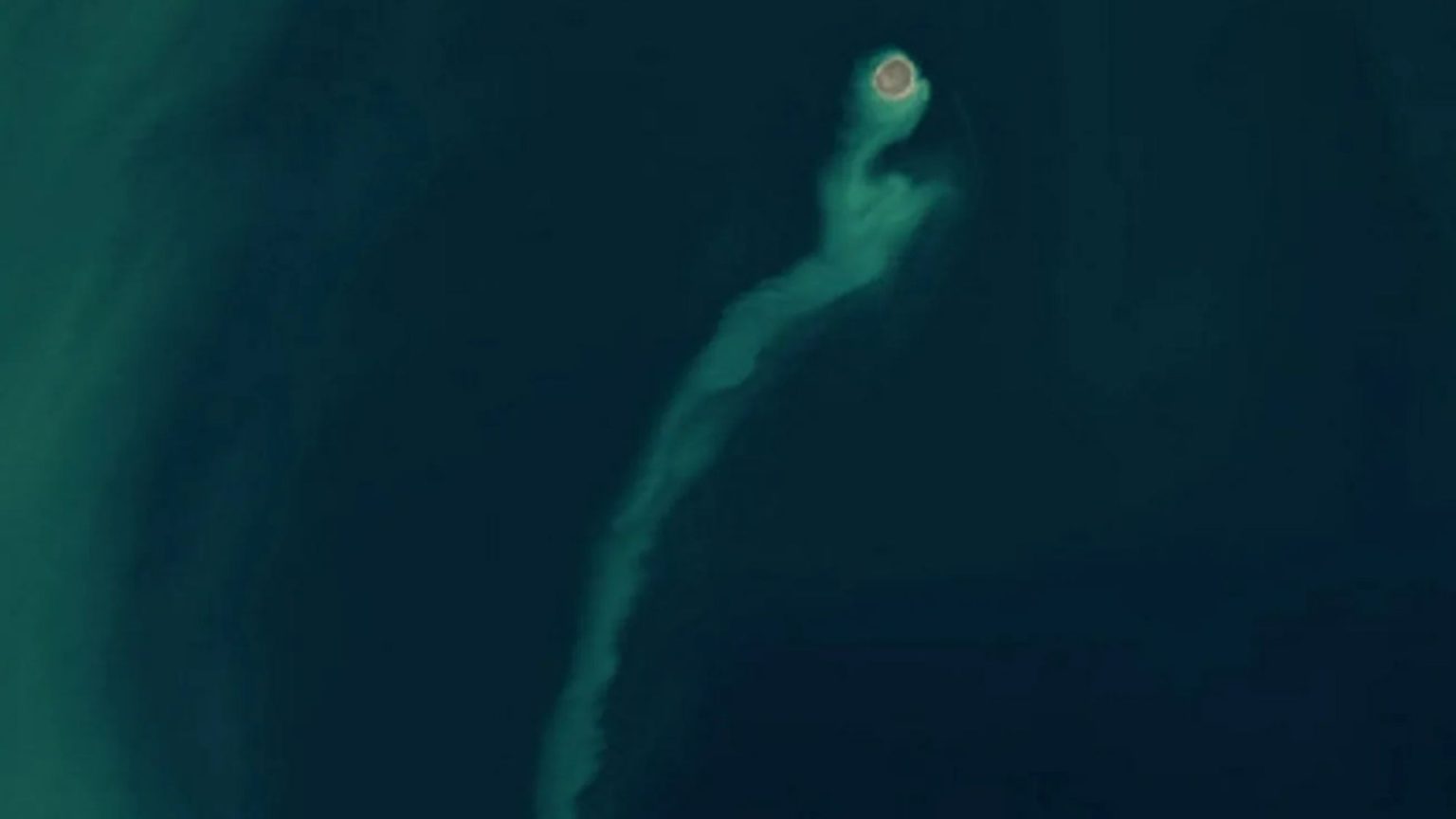The Caspian Sea, a landlocked body of water nestled between Europe and Asia, witnessed a peculiar geological phenomenon in early 2023: the emergence and subsequent disappearance of a “ghost” island. Satellite imagery captured by NASA’s Landsat 8 and 9 satellites revealed the island’s ephemeral existence, rising from the seafloor only to dissolve back into the depths months later. This transient landmass formed near the Kumani Bank mud volcano, also known as Chigil-Deniz, located approximately 15 miles off the eastern coast of Azerbaijan, near its capital, Baku. The island’s formation followed an eruption of the mud volcano, which spewed forth a substantial quantity of solid material, enough to create a temporary, above-water structure. This cycle of emergence and disappearance echoes similar events observed around this particular volcano since its first recorded eruption in 1861, further adding to the mystique surrounding this geological oddity.
The “ghost” island’s lifecycle began in late 2022, initially appearing as a submerged volcanic crest. As volcanic activity intensified, the island gradually rose above the water’s surface, accompanied by a noticeable sediment plume trailing behind it. Satellite observations suggest the island reached its peak size, approximately 400 meters across, between January 30 and February 14, 2023. However, its presence was short-lived. By the end of 2024, only a tiny sliver of the island remained visible, poised to vanish completely in the near future. This rapid erosion and disappearance underscore the transient nature of these formations, arising from the dynamic interplay of geological forces and the erosive power of the Caspian Sea.
Mud volcanoes, unlike their magmatic counterparts, do not erupt molten rock. Instead, they expel a mixture of mud, water, and gases, often including flammable components like methane. The eruptions can be dramatic, sometimes ejecting large volumes of material and even igniting flames that can reach hundreds of meters into the air. The specific cause of these fiery eruptions remains somewhat unclear, but one theory suggests that sparks generated by colliding rocks ignite flammable gases released from deep within the Earth. The Caspian Sea region, particularly Azerbaijan, boasts a unique geological setting conducive to mud volcano formation.
Azerbaijan holds the distinction of having the highest concentration of documented mud volcanoes globally, with over 300 identified within its borders and offshore in the Caspian Sea. This abundance is attributed to the region’s unique geological characteristics, primarily its location within a convergence zone where the Arabian and Eurasian tectonic plates collide. This tectonic activity creates ideal conditions for the formation of mud volcanoes, contributing to the region’s dynamic and often volatile geological landscape. The Kumani Bank mud volcano, responsible for the 2023 “ghost” island, exemplifies this geological activity. While it remains uncertain whether the 2023 eruption involved flames, previous eruptions at this site and other nearby mud volcanoes have produced spectacular fire displays.
Mud volcanoes, despite their prevalence in certain regions, remain relatively understudied and poorly understood geological phenomena. Their unique characteristics, including the absence of lava and the potential for fiery eruptions, distinguish them from traditional volcanoes. These formations can vary significantly in size, ranging from a few centimeters to hundreds of meters in height, and they can occur both on land and underwater. The eruption process involves the heating of water deep within the Earth, mixing with rocks and minerals to form a pressurized slurry. This mixture is then forced through the Earth’s crust, resulting in an eruption.
The transient nature of the “ghost” island in the Caspian Sea serves as a striking reminder of the dynamic forces shaping our planet. The eruption of the Kumani Bank mud volcano, the resulting formation of the island, and its subsequent erosion provide valuable insights into the complex geological processes occurring beneath the surface. Further research and observation of these unique geological features are crucial for enhancing our understanding of mud volcanoes and their role in shaping the Earth’s landscape. The ephemeral appearance and disappearance of the “ghost” island highlights the ongoing interplay between geological activity and the erosive forces of nature, a constant reminder of the ever-changing face of our planet.











